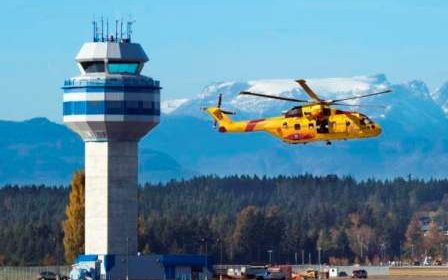My titled ARP as of so far is “Air Traffic Control Training Addressing Student Task Saturation through the Use of Simulator Technologies by the Royal Canadian Air Force.” My main question of research: In what ways might technology be used to address concerns of trainee task saturation during air traffic control simulator training?
In approaching this research project, I am currently looking at two theoretical frameworks that may fit the bill for this project. Firstly, Technology Acceptance Model (TAM): the model that answers the question, why do people use technology? Under the TAM model, people use technology because of its ease of use and perceived usefulness (Davis, Bagozzi, & Warshaw, 1989; see also Venkatesh & Davis, 2000). Portz, et al. (2019) states “the theory posits that a person’s intent to use and usage behavior of a technology is predicated by the person’s perceptions of the specific technology’s usefulness” (p. 1). Secondly, the theory of cognitive apprenticeship will also be used as a theoretical framework. Cognitive apprenticeship is defined as “learning-through-guided-experience on cognitive and metacognitive, rather than physical, skills and processes” (Collins, Brown, & Newman, 1989, p. 456). Cognitive apprenticeship is a model of instruction that works to make thinking visible; it is composed on four main concepts: methods, ways to promote the development of expertise; sequencing, keys to ordering learning activities; sociology, social characteristics of learning environments; and content, types of knowledge required for expertise (Collins, Brown, & Holum, 1991). Much of air traffic control instructional practices are based on the underlying processes of cognitive apprenticeship due to the complex-tasks students must be able to demonstrate consistently throughout their training.
Questions
- Is the TAM model an appropriate framework for assumptions in reference to my research question?
- What issues, if any, may I have when using the TAM model framework?
- Is cognitive apprenticeship an acceptable theoretical framework or is it more of a way of instructing then a framework itself?
- What positives, if any, do you see if I use these frameworks in reference to my research question?
Collins, A., Brown, J.S., & Holum, A. (1991). Cognitive apprenticeship: Making thinking visible. American Educator, 15(3), 6-11. Retrieved from http://citeseerx.ist.psu.edu/viewdoc/download?doi=10.1.1.124.8616&rep=rep1&type=pdf
Collins, A., Brown, J.S., & Newman, S.E. (1989). Cognitive apprenticeship: Teaching the craft of reading, writing, and mathematics. Knowing, Learning, and Instruction: Essays in Honor of Robert Glaser, L.B. Resnick (Eds.). Hillsdale, NJ: Erlbaum.
Davis, F.D., Bagozzi, R.P., & Warshaw, P.R. (1989). User acceptance of computer technology: A comparison of two theoretical models. Managing Science, 35(8), 982-1003. doi: https://doi.org/10.1287/mnsc.35.8.982
Portz, J.D., Bayliss, E.A., Bull, S., Boxer, R.S., Bekelman, D.B., Gleason, K., & Czaja, S. (2019). Using the technology acceptance model to explore user experience, intent to use, and use behavior of a patient portal among older adults with multiple chronic conditions: Descriptive qualitative study. Journal of Medical Internet Research, 21(4). doi: 10.2196/11604
Venkatesh, V., & Davis, F.D. (2000). A theoretical extension of the technology acceptance model: Four longitudinal field studies. Management Science, 46(2), 186-204. doi: https://doi.org/10.1287/mnsc.46.2.186.11926
Read More

Recent Comments